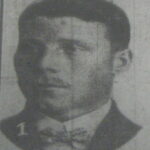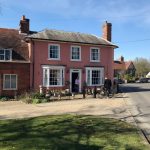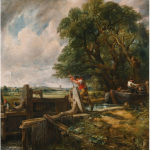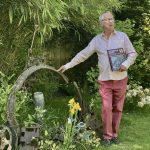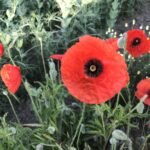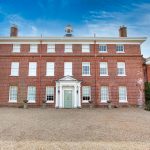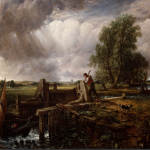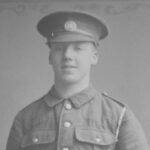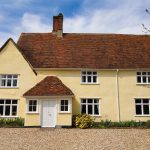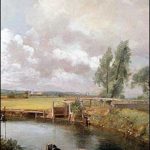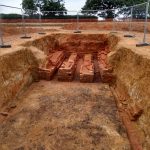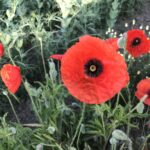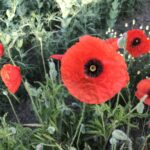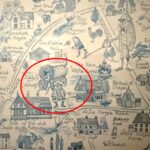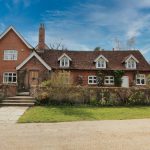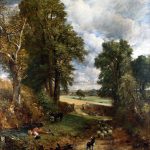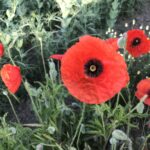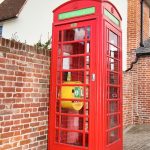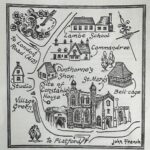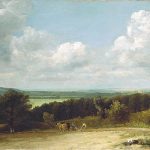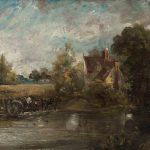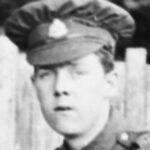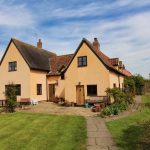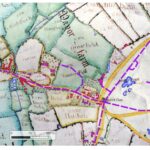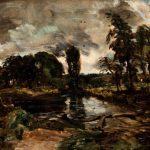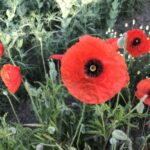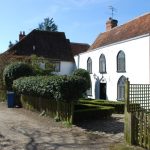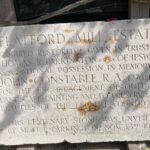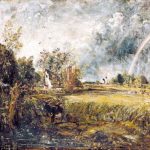A historic landscape study of East Bergholt published November 2020. A study to considers the archaeological dimension of the village that stretches back into prehistory, the time depth of the landscape around the village documented in Constable’s paintings and the modern heritage and landscape context of the village
Brother of Frederick Southgate and Walter Southgate. A pre-war Regular in the King’s Royal Rifle Corps, William was later attached to the Indian Telegraph Department and served with them in Mesopotamia.
Boat waits to enter the lock to move upstream with threatening rainclouds overhead and distant views across the water meadows towards Dedham Church.
The Lock is the fifth of six paintings that make up the Stour series of ‘Landscapes’ that became known as the ‘six-footers’ and which included ‘The White Horse’ 1819, ‘The Haywain’ 1821, ‘A view on the Stour near Dedham’ 1822, ‘Leaping Horse’ 1825, and the sixth being further up stream at Stratford (Stratford Mill 1820)
Author, filmmaker and photographer, Simon Dunstan has written more than 55 books on military history, and directed numerous military history documentaries for the history channel and ‘retired’ to the village in 2014
Arthur joined up in September 1914 and served for over 2 years on the Western Front with the 11th Battalion of the Essex Regiment. He was wounded and captured during the German Spring Offensive in March 1918. Arthur died of his wounds shortly after his repatriation to the U.K.
Boat ascending the River Stour, tied to a post while the lock keeper lowers the level so it can enter the chamber.
The Lock is that of Flatford, looking westwards towards Dedham Church visible in the distance, with the background to the far right Flatford Bridge.
Andrew was one of four Bergholt men to join the Northamptonshire Regiment together, in August 1914. Three of the four men were all killed on the same day – the heaviest loss that East Bergholt would suffer on a single day, during the Great War.
The lock gates of Flatford from the Mill house.
The remains of an 1800's Brick Kiln have been unearthed in a field next to the Medical Centre in Heath Rd. This kiln, typical of its type for Suffolk, would have been close to the Constable family Windmill on the corner of Mill Road and would typically have used locally sourced clay from "Clay Pit Field" next door north east of the Donkey Track. The red bricks from this kiln would doubtless have found their way into numerous houses in the village built during that period.
Finding such a site in good condition is unusual, although a few other examples have been found in this part of Suffolk. It is unfortunate that, within a week of the find being made public, the developers filled in the site completely. Sadly therefore, except for the photos, we have lost this little bit of Victorian industrial history almost as soon as we found it.
(Download this article as a PDF here)
The first of the East Bergholt men to die in the Great War. Charles joined the Royal Navy as a Boy Seaman and mainly served on Cruisers. He was killed when his ship HMS Aboukir, was sunk by a German U-Boat, less than two months after the outbreak of war.
Edward ran the shop in the centre of the village. After the outbreak of War, like many men too old to serve in the regular Armed Forces, he joined the Volunteer Training Corps.
Back in the 1930s, before the days where rural villages could be pipe-fed wate from reservoirs, boreholes would have been essential for domestic and agricultural use. The East Bergholt Notcutts borehole provides evidence of these. It also adds a little history on how the traveller population would have resided in the village - as reported here by Joan Millar who now owns the field on which the now-redundant borehole now sits.
A boy paused from thirsty work of herding sheep, lies flat on the bank of cool water next to the cornfield.
The winding lane, that of Fen Lane and which Constable knew well from his childhood that took him to school past the church, along Flatford Lane, passing this spot down Fen Lane, over Fen Bridge and across the meadows to the Grammar School.
George left his job at the Xylonite Factory at Brantham and volunteered to join the Royal Garrison Artillery arm of the Territorial Force. He was killed in a tragic accident before he saw any overseas service.
Celia Jennings lived with her husband ‘Paul Jennings’ (British Author) at Hill House on Rectory Hill in the 1960’s-1980’s and lead a group of people interested in local history of the village.
She wrote a number of articles for the East Bergholt Society and also published ‘John Constable in Constable country’ in 1977
Described as an alternative view to ‘The Haywain’, this compositional sketch became the subject of the BBC 2017 Fake or Fortune programme. Provenance as a genuine John Constable was finally established, but only after it had been on the market twice since 1995, then described as being painted by someone within the ‘circle of Constable’.
A soldier in the Territorial Force, Alan was initially too young to serve overseas so was engaged in coastal defence duties in eastern England. He later served on the Western Front and also in Italy, with the 1st Battalion of the Bedfordshire Regiment.
The Brasier map can be found in the Benneworth Lounge at Constable Hall.
This study is for a painting of the Mill from the lock exhibited at the Royal Academy in 1812, otherwise known as ‘A watermill’ and now held in a private collection.
Brother of Richard Wood and Robert Wood. Geoffrey joined the Army in August 1914. He served with the 7th Battalion of the Suffolk Regiment on the Western Front, until his death during the Battle of Loos.
The Preservation of Flatford: Honoring the Legacy of Mr. Thomas Parkington (1866-1942)
Green landscape of cottage and windmill with workhorse to the foreground.
This simple green landscape seems to be in disarray with the untidy fields and a poor workhorse stuck out in the cold waiting for the storm to come.


